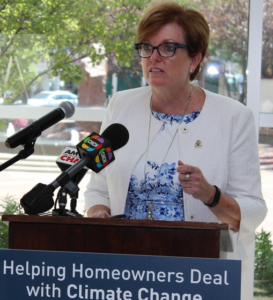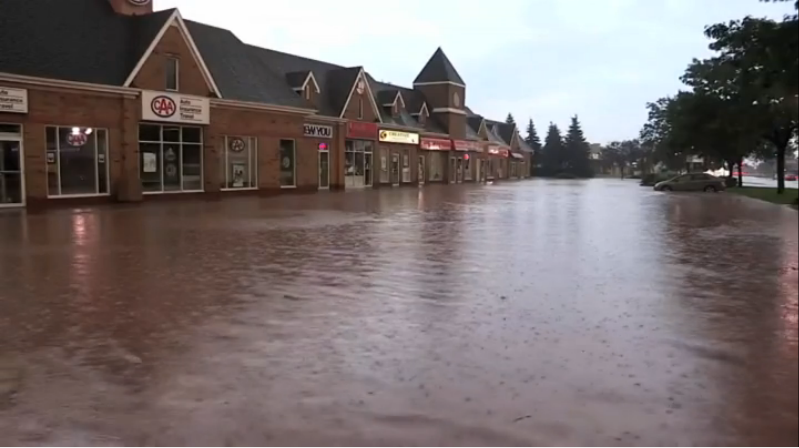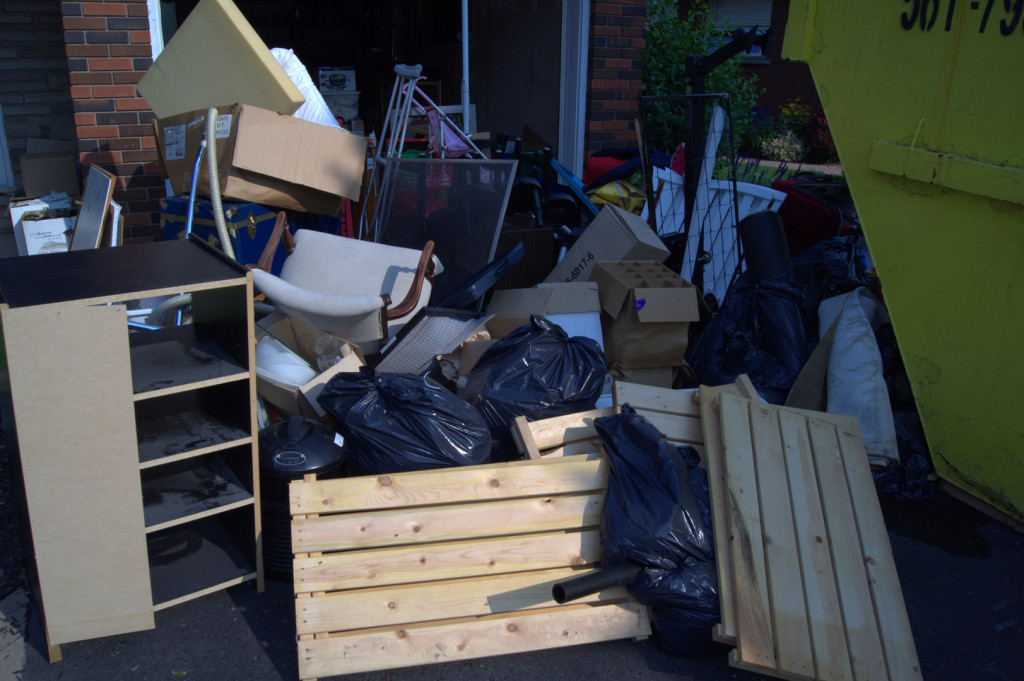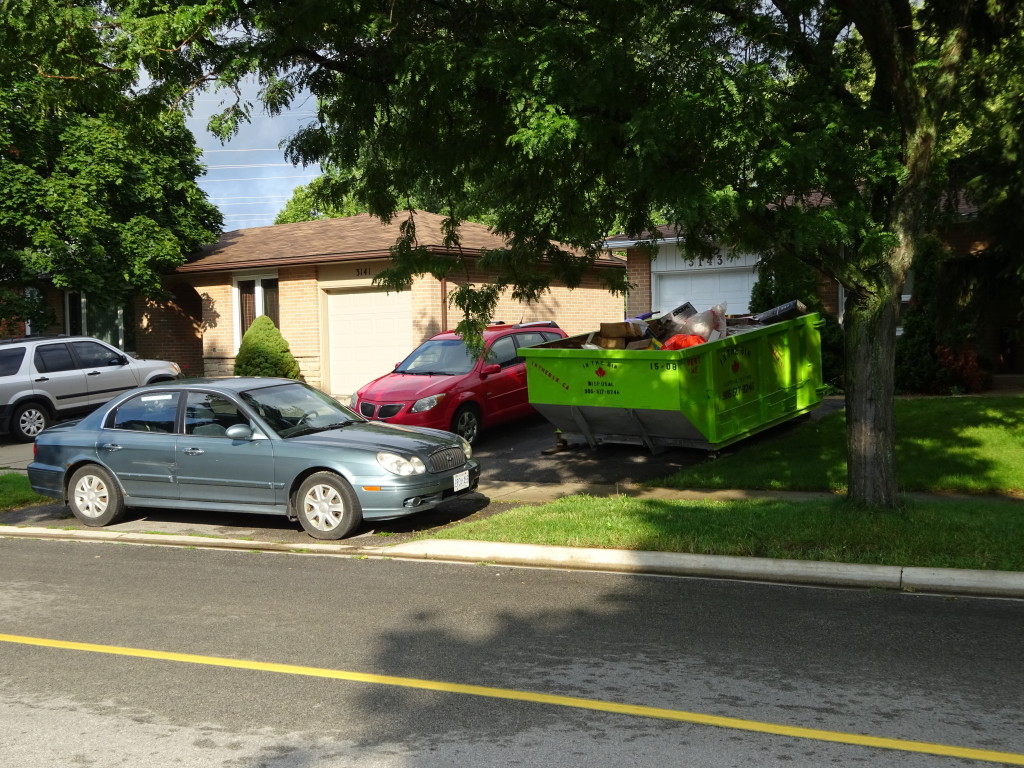 By Pepper Parr
By Pepper Parr
August 7th, 2016
BURLINGTON, ON
The woman who badgered a Cabinet Minister to ensure that Burlington residents had access to ODRAP – Ontario Disaster Relief funds – announced Friday that Ontario is investing $237,000 in a pilot project that will help Burlington homeowners reduce the risk of basement flooding from severe weather events associated with climate change.
Eleanor McMahon was a backbencher MPP when the flood hit the city in 2014; today she is a member of the provincial Cabinet responsible for Tourism, Culture and Sport

Burlington’s MPP, Cabinet Minister Eleanor McMahon announcing the Home Adaptation Assessment Program program.
In her announcement McMahon said: “Ontario’s people and businesses are already feeling the effects of climate change. It has damaged the environment and has caused extreme weather events such as flooding, which can damage basements and homes and increase insurance rates.
“After experiencing substantial residential flooding in August 2014, Burlington was selected as the ideal location to run the first large-scale basement-flood risk reduction program. Developed by the University of Waterloo’s Intact Centre on Climate Adaptation, the Home Adaptation Assessment Program will:
Assess the vulnerability of 4,000 Burlington-area homes to flood damage
Make recommendations to help homeowners avoid costly damage from extreme weather
Collect the data needed to inform potential expansion of the program to communities across the province.

This kind of flooding hit both the residential and the commercial community.
Lessons learned from the pilot program in Burlington will inform a broader roll-out of the program across Ontario. The joint pilot is between the provincial government, Intact Centre on Climate Adaptation, City of Burlington and participating homeowners who will be asked to pay a small fee for the inspection work done on their homes.
City Council has approved contributing an additional $50,000 the first year with opportunities to reassess in 2017.
The program, Home Adaptation Assessment Program (HAAP) will announce the names of the designated neighbourhoods and registration details this fall.

Basements throughout the city were cleared of wet soggy warped property and sent to the dump.
The media release added that: “Over the past decade, an increase in the frequency and severity of extreme rainfall events, aging municipal infrastructure and inadequate flood protection measures at the household level have all contributed to significant increases is basement flood damage costs across Canada. More specifically, property and casualty insurance claims have more than doubled in the past decade, with basement flooding being a central cause.”
That statement makes it sound as if the home owners were the ones to blame for problems with down spouts and letting the natural swales between houses build up.
A large part of the problem was with storm sewers that could not handle the huge and sudden flow of water. Home owners just did not know what they were supposed to do. The fire department puts out a regular flow of fire safety information – the same needed to be done about climate change.
The city knows now of a number of homes that cannot remain where they are in a specific flood plain; the information is in a city report but those specific home owners have not been informed.
The Home Adaptation Assessment Program (HAAP) is a basement-flood risk-reduction program. The program integrates international best practices for household flood prevention with input from homeowners and municipal engineers.
One-on-one support is available to individual households through a Home Adaptation Assessment. For a small fee, a trained HAAP assessor will take homeowners through a 50-point examination of potential water entry into the home and help develop a prioritized action plan to reduce risk. A customer help-line, follow-up surveys and seasonal maintenance reminders provide additional support to homeowners. HAAP’s approach is developed in consultation with local government, conservation authorities and community groups, ensuring that HAAP enhances and is complementary to existing flood-risk-mitigation programs.

Dumpster bins were in the driveways of hundreds of home in the city in August of 2014
The first large-scale phase of the development of HAAP will be carried out in Burlington where 4,000 home assessments in designated neighbourhoods will be completed by the end of 2017, with the first 500 to be completed in this year. These will be carefully selected to be representative of neighbourhoods across Ontario (based on home size and age, age and type of municipal infrastructure and past experience with flood risk). Lessons learned from HAAP delivery in Burlington will inform a broader roll-out of the program across Ontario.
The 2014 flood played no favourites. Both the Mayor and the federal member of parliament at the time had their basements flooded.
Related article: Insurance and pension fund sectors need better risk assessment tools to manage financial impact of climate change



















In theory an interesting plan but not without several concerns:
1) Why wasn’t this program initiated immediately after the 2014 flood? Why must residents wait over three years in order for this to be initiated?
2) The Region has already sent staff around to gather information and determine which homes have downspouts connected to sewers. Now the plan is to have consultants meet and provide advice/guidance to homeowners on what they should be doing to ameliorate the potential for flooding. Why wasn’t this done earlier? Moreover, why should residents have to pay for it?
3) As referenced in the article the sewers could not handle the amount of rainwater. Why?
4) At the time of the flooding New Street was under intense reconstruction. What impact did this have on the flooding problem? No concrete answers to this question have ever been provided by the City or the Region.
5) The flooding occurred on a long weekend. Were there sufficient staff on duty at wastewater treatment plants? My basement started flooding about 5:45 p.m. and I was bailing like crazy. Suddenly just before 6:30 p.m. the water flow stopped. It was if someone had pull a plug and the water quickly drained. Odd? You bet.
6) Drive through south Oakville on Lakeshore Road between Lakeshore and Wilson and Lakeshore and Third Line you can count no fewer than five different construction projects focusing on wastewater/sewer enhancements . Where are similar initiatives in Burlington? This Council keeps yapping on about intensification and density increases, but they have failed repeatedly to commit the necessary funds and resources to upgrade sewers, roads, etc. to accommodate this increase in population density.
7) A handful of insurance companies have been especially bloody-minded in their handling of residents flood claims. The Mayor knows who these firms are. Has he gotten on the phone and personally called their CEO’s and Presidents to express, on behalf of residents and the City, his dismay and disgust with the treatment received, and to ask for my flexibility? I suspect not.
Frankly, what could and should have happened in August 2014 was a provincial inquiry headed by a retired judge empowered to investigate this event with the authority to subpoena witnesses, conduct a thorough investigation, and issue an unredacted, unedited, unabridged report. What we got instead was a cute charm offensive by the Mayor, the Regional Chair, and City officials who have continually reassured us that the problem is in hand, relax, and everything will be just fine. Frankly, an Emergency Booklet from the Region complete with pretty pictures of what to include in an emergency kit isn’t going to help me one iota if my basement is flooded with six feet of sewage.
Two years later neighbours in my area are still trying to pull their lives back together after this event. A number of residents have moved, and a number of others, tired of battling grubby insurance companies and sleazy restoration firms, have ended up doing the renovations themselves. While this speaks volumes about the character of residents it is both unacceptable and unnecessary that they should have to incur the costs entirely themselves.
Municipalities Allow building permits in areas where buildings should never be—Banks loan money on these disasters waiting to happen–Then the insurance companies Insure them–
This is making a Quick buck only to lose more later–
I call that GREED–
I don’t think Taxpayers should be on the hook for the costs–